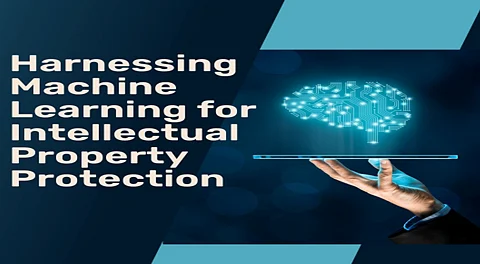

This new digital age of proliferation in digital content and online marketplaces brings forth new challenges to intellectual property protection. Hemang Manish Shah's research brings forward advanced machine learning solutions that help overcome these challenges and are indicative of the evolution of technologies in detection, efficiency, and scalability. His work looks into innovations in computer vision, natural language processing, and cloud optimization, thereby offering a forward-thinking framework for fighting IP violations across various industries and platforms.
Early IP protection systems used classifiers based on SVMs and some simple rule-based techniques for detecting. These simple techniques often suffer from contextual aspects, semantic understanding, and multilinguality, so the success rates in direct TM violation detection were at best moderate at 73.6%. Advances in large language models, like transformer-based architectures, have transformed this landscape to the point where these achieve 91.5% accuracy over complex, multilingual contexts. Such approaches are great at making nuanced distinctions in brand misrepresentation and even more sensitive at finding subtle IP violations well beyond what traditional detection systems could attain.
The integration of computer vision technologies has transformed the landscape of visual IP protection, redefining benchmarking measures of accuracy and speed. Utilizing CNNs, detection rates are now at 95.7% for logo modifications, image counterfeits, and minor changes. The most sophisticated models, such as ResNet-50, are capable of detecting even minor distortions of logos and color changes. Processing more than 1.5 million images a day, the systems provide real-time, accurate detection to safeguard brand integrity in digital and e-commerce channels.
Multi-modal systems combine text, images, and structured data to provide comprehensive IP protection, bridging gaps left by traditional detection methods. His research highlights the implementation of CLIP-based architectures, which achieved 93.8% accuracy in identifying inconsistencies between product descriptions and images. These systems prove particularly effective against sophisticated brand impersonation tactics, maintaining consistent performance across 12 major languages and diverse global platforms. Their holistic approach fortifies protection for IP by integrating insights from various modalities that deliver an easy and robust solution to modern challenges.
Cloud computing delivers scalable, efficient solutions to IP protection in a way that transforms the way businesses handle content security across operations. Modern systems use distributed processing and dynamic resource allocation to accommodate up to 50,000 concurrent streams without interrupting sub-100ms latency during peak operation. Innovations such as model compression and GPU acceleration help reduce processing time by 71.2% and enhance throughput by 345%, providing efficient performance. All these optimizations make cloud-based IP protection systems essential in dealing with growing complexity of the global digital ecosystems.
Recent technologies such as federated learning address the concern of privacy because it supports distributed model training but keeps the private data at local devices. His research demonstrates that federated learning architectures achieve 93.8% of centralized model accuracy while maintaining strict data isolation and compliance with privacy regulations. This innovation fosters collaboration among institutions for IP protection, enabling efficient cross-institutional systems that operate effectively in data-sensitive environments. It ensures high detection performance without compromising confidentiality, a critical factor in today’s regulatory landscape.
Zero-shot learning further expands the reach of IP detection systems to cover emerging threats rapidly. Advanced transformer models achieve an accuracy of 81.2% in identifying previously unseen patterns within 36 hours of deployment, even in contexts that are unknown. By minimizing dependency on large, labeled datasets, these systems improve adaptability and readiness for rapid responses to novel IP violations. Their ability to discover infringement with reduced retraining fortifies operational effectiveness in ever-changing digital landscapes.
Adapting models, as well as continuous learning framework, are helping to form the future of protection of IPs through unprecedented scalability and versatility of the detection systems. Such innovations also enable real-time updates, rich multilingual support, and an integration with some of the newly emerging technologies, such as blockchain and federated learning. As IP violations become increasingly sophisticated, advanced solutions will become essential for secure and efficient digital ecosystems. The future will keep raising the bar for adaptability and performance in IP protection systems. AI-driven insights will be used to anticipate and counter potential threats, thereby offering robust asset protection. The drive for automation will further make it easier to meet the ever-evolving regulatory standards across the world.
In a conclusion, the work by Hemang Manish Shah epitomizes the best future intellectual property protection steps ahead with novel, innovative solutions for contemporary problems. Through integration with machine learning, advanced analytics, and cloud optimization, the work establishes a foundation that could potentially enable efficient, adaptive IP protection systems. When these technologies start gaining mainstream use, his work will shape the digital ecosystem for a safe, resilient, and efficient future.
